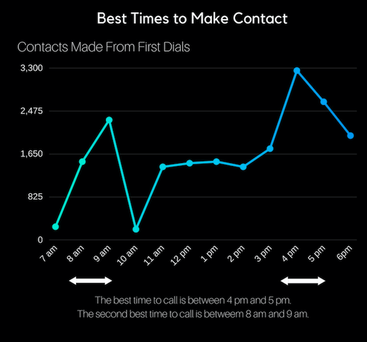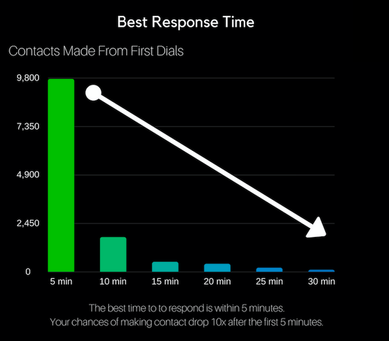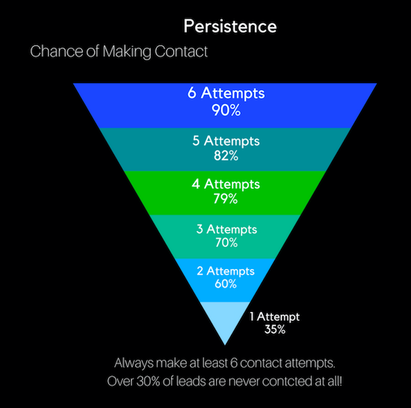 If you’re a real estate agent, loan officer, or work in sales in any capacity, then prospecting is a way of life. Cold calling, door knocking, social media posts, email newsletters, mailing postcards, prospecting phone calls, and even open houses are the tools of the trade. In fact, you probably spend the lion’s share of your work week thinking about how you’ll attract new clients – or you should be. But, too often, prospecting takes a backburner to just about every other task of the modern Realtor or loan officer. While it should be the number one priority for any business that expects to thrive, client outreach still largely remains unfocused, un-quantified, and following no logical strategy. But imagine if you could rely on scientific data and behavioral studies to refine your prospecting activities into laser focus? The result could help you increase your contact ratios and the value of your leads 100 times over, as well as allowing you to increase qualified leads by 21 times, boosting your revenues exponentially with newfound efficiency. The comprehensive and cutting-edge study was conducted by James Oldroyd, P.H.D. from the Ohio State University and Faculty Fellow at MIT, as well as David Elkington, the C.E.O. of InsideSales.com. Data was tracked diligently over three years, across multiple companies and industries, tracking 100,000 call attempts and follow up with 15,000 unique leads. The findings were so profound that it was quickly published in the Harvard Business Review Magazine and shared industry-wide. The behavioral study set out to learn some critical information about lead management and prospecting web leads. Mountains of data were analyzed with one question in mind: for the best results, when and how should salespeople and companies respond to their leads? They found that there are four external factors that show the greatest impact on closing qualified leads:
 1. Wednesdays and Thursdays are the best days to contact prospects. The study found that Wednesdays and Thursdays were the two best days to call leads and make contact. The study also found that Tuesdays are the worst days to contact a prospect. In fact, Thursday is 49 percent better to contact prospects than on a Tuesday, making it the best time of the week to dedicate to prospecting! Qualifying leads (different than just making first contact with them) is also most fruitful on Wednesdays. In fact, your chances of qualifying a lead on Hump Day are 24.9 percent better than on any given Friday, which is the worst day. However, Friday wasn’t bad for making contact with a lead – just not the time to qualify them.  2. The best time to call a qualified lead is between 4 pm and 5 pm. In fact, the study found that calling during that late afternoon hour resulted in 149 percent better closing ratios versus calling at 1 pm to 2 pm. In general, 4 pm to 6 pm is the best time to make contact with a lead, as it's 114 percent more successful than calling between 11 am and 12 pm (right before lunch time!). The next best time to call a prospect is between 8 am and 9 am every day.  3. The best time to respond to a lead is within 5 minutes. It’s common sense that you should call people back as soon as possible, but the urge for recency is even more prevalent with web leads. The study found that just by waiting 10 minutes to call a prospect back, you’re hurting your chances of contacting and qualifying them by 400 percent, and your chances of landing the sale drop by 10x after the first 5 minutes have passed! Furthermore, the odds of reaching a lead decrease by six times through the first hour, and drop another ten times after the first hour has passed. The study also found that after 20 hours had passed, it wasn't even worth trying to call or contact prospects (unless through some sort of marketing automation like emails, etc.) because you actually might be hurting your chances of making the sale. Of course, that speaks to web leads, which may be far different than real estate and loan prospects in the real world, but you get the idea – sometimes, it’s better to stop chasing and just wait for them to call you back, instead.  4. Always make at least six call attempts to reach a prospect. Therefore, most salespeople give up on a lead way too soon – and over 30 percent of qualified leads are never reached at all (although attempts may be made). The study found that just by making a few extra call attempts, the chance of closing the sale increased by 70 percent. The study found that by the sixth attempt to contact a qualified lead, your chances of closing the sale go up 90 percent compared to just making one call. Point blank; sales people don't make enough attempts to contact their qualified leads before giving up. The study found that while most salespeople will call a lead back one time, only slightly more than 20 percent – or one in five – will call twice. They also discovered that only 10 percent will call three times, and only between 1 and 2 percent of salespeople will call a prospect back a sixth time in an attempt to make contact. So how does the average company’s sales team stack up? This survey also found that most companies are falling woefully short when it comes to optimal practices for engaging their prospects. In fact, the average company:
Remember that these statistics are based on web leads, not "warm" referrals, prospects from networking, advertising, or inquiries generated from social media marketing. But the four fundamentals of lead management probably still apply in some degree when it comes to prospecting for your real estate or mortgage lending business. If nothing else, start tracking the result of your prospecting efforts based on these four variables and see if you find a significant difference, as well! -Norm :-) Email [email protected] if you have any questions about this study or want to see how you can close more deals. Download this infographic:
2 Comments
Thank you for posting these statistics. I have experienced this same analysis but I was off on my Friday evaluation but the rest is pretty true. Interesting thing I've experienced, is that the same days (not times) are very good days also at our local casino also - very interesting but can't understand quite why it works this way!
Reply
Leave a Reply. |
Categories
All
Archives
December 2020
|
||||||||
Get in touch: |



 RSS Feed
RSS Feed
